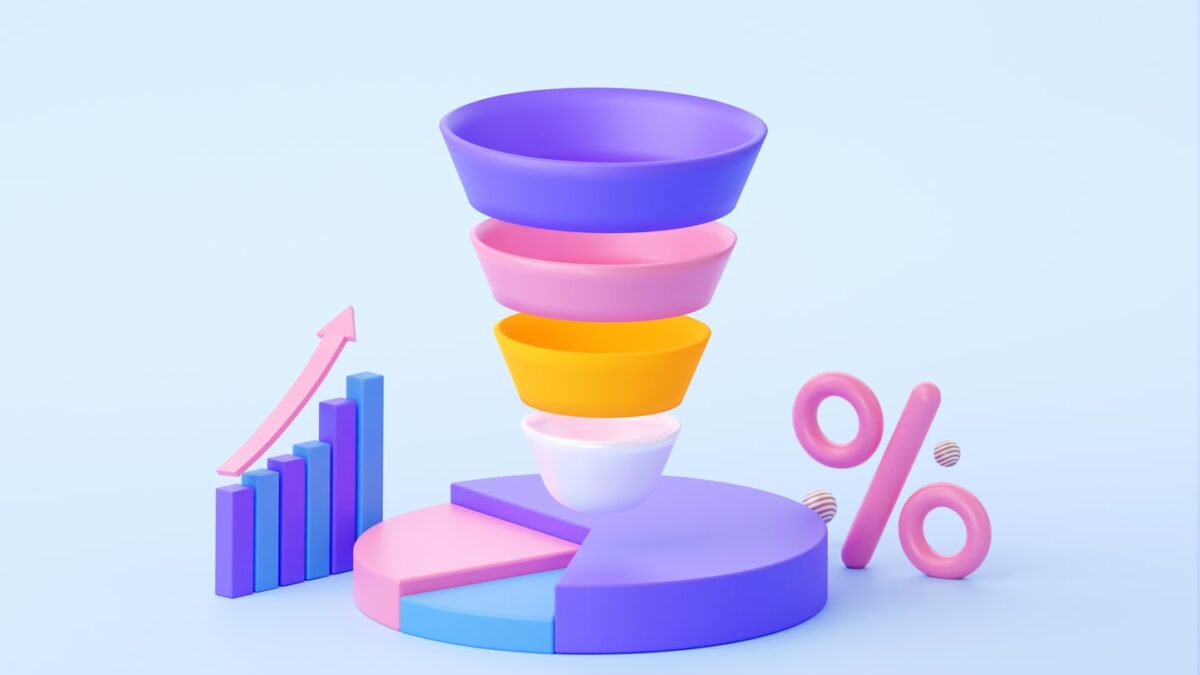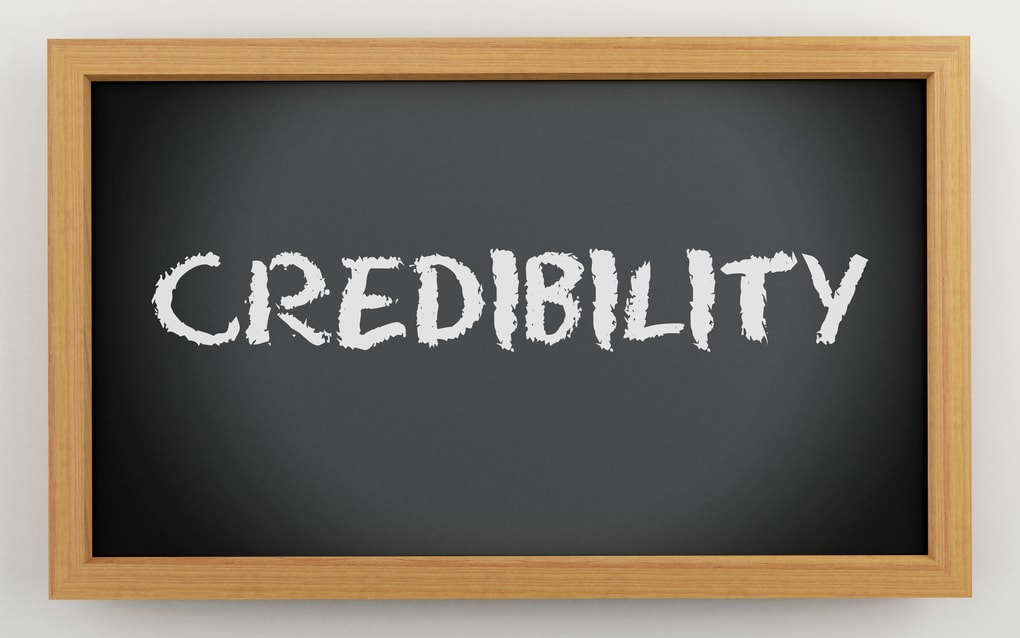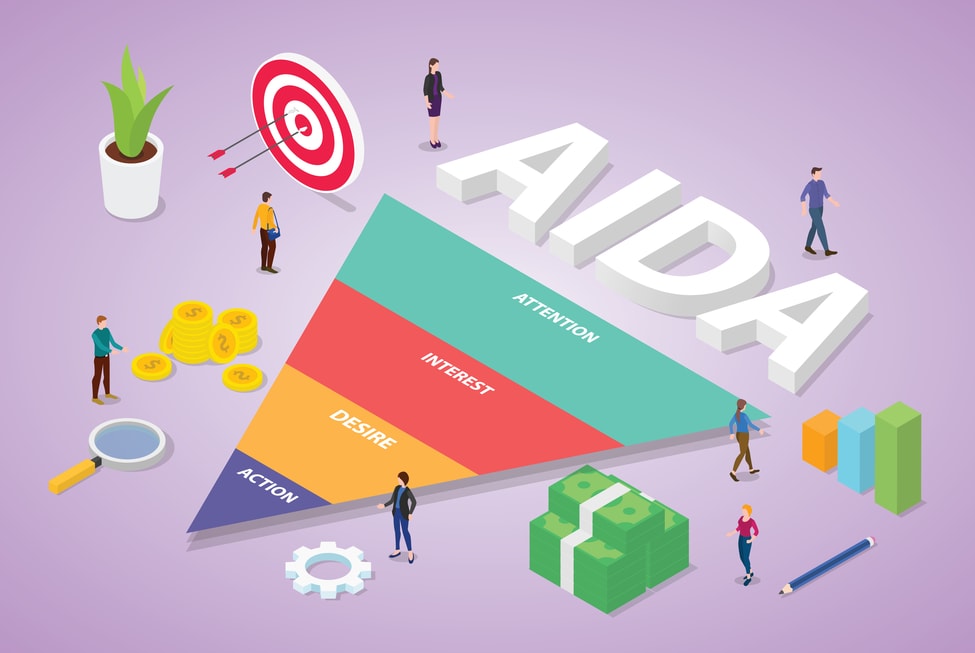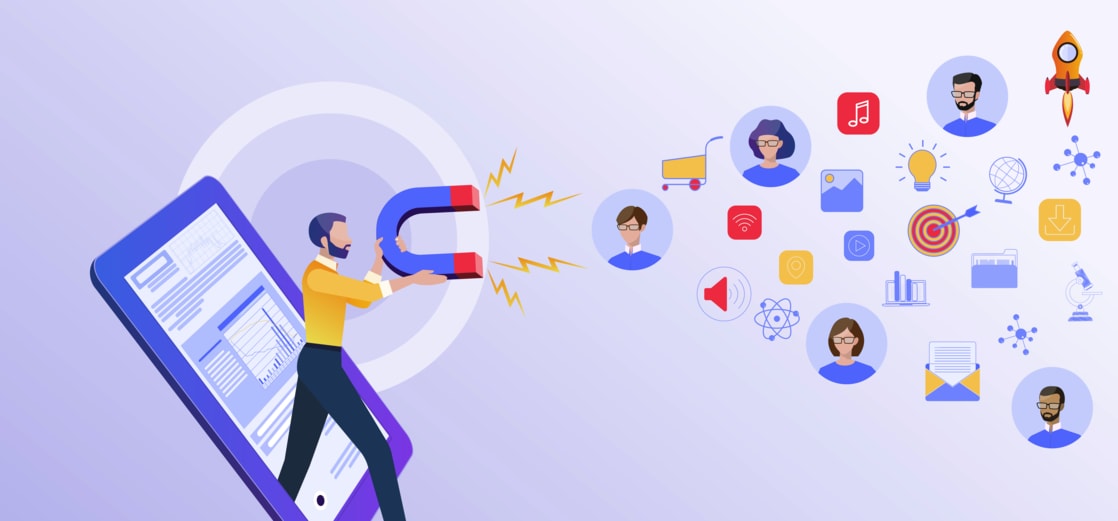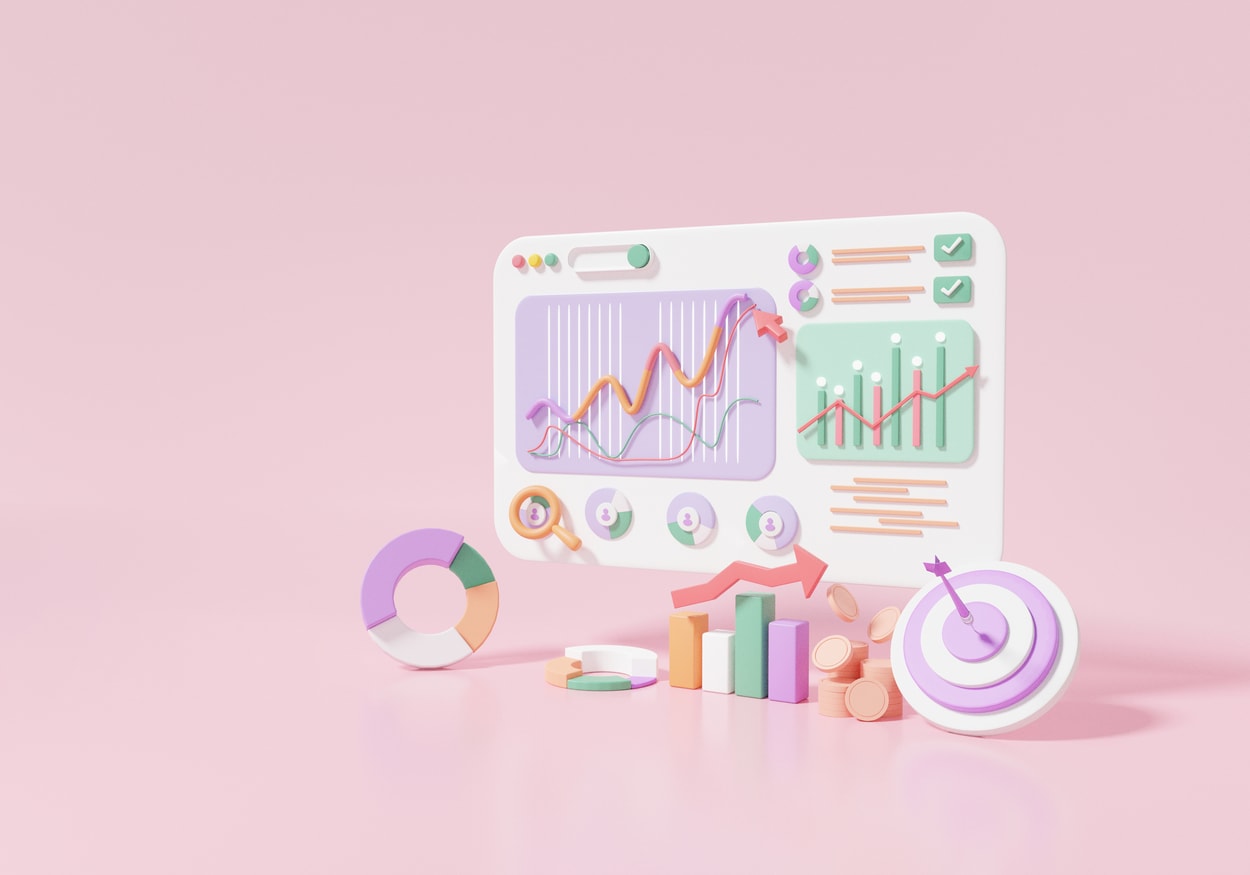The modern B2B buyer has evolved. Thanks to the internet and an ever-growing wealth of information, today’s B2B buyer is more informed, more savvy, and more demanding than ever before. Every day, they are bombarded with sales pitches and messages from companies vying for their attention.
As a result, the old school “spray-and-pray” approach to sales just doesn’t work anymore. To succeed in today’s B2B landscape, you need to create a sales funnel that will nurture your leads and guide them through the buying process.
This blog post will show you how to create a successful B2B sales funnel to help you close more deals and drive more revenue.
What is a B2B sales funnel?
Generally speaking, a sales funnel is the process companies use to identify and qualify potential customers and convert them into paying customers.
The term “sales funnel” comes from the fact that most buyers go through a predictable journey as they move from being aware of a problem or need to consider solutions to purchasing. The sales team’s job is to guide buyers through this journey. In the sales process, the sales funnel often represented as a series of steps or stages, from initial contact with a potential customer (the top of the funnel) to closing the sale (the bottom of the funnel).
The typical B2B sales funnel looks something like this:
Stage 1: Awareness
At the awareness stage, potential customers become aware of their problem or need. They may not be actively searching for a solution, but they are starting to educate themselves on their options. The sales and marketing teams’ job is to generate awareness of the company and its products or services. This can be done through various marketing channels like content marketing, paid advertising, social media, and search engine optimization (SEO).
Stage 2: Consideration
At this stage, potential customers are actively searching for information about solutions to their problem or need. This is also called as interest stage and it should be an integral part of your brand funnel. Where they are comparing different options and considering which ones would be the best fit for their specific situation. The sales and marketing teams’ job is to provide relevant information and resources that help educate potential customers on the features and benefits of the company’s products or services.
Stage 3: Decision
When potential customers reach the decision stage, they have a pretty good idea of what they need and are now ready to make a purchasing decision. The sales team’s job is to provide any additional information or resources that may be needed to help finalize the decision and close the sale.
Stage 4: Purchase
Once the sale is made, the customer becomes a paying customer and moves on to the next stage of their journey. The sales and marketing teams’ job is to continue providing value and support to ensure a successful product or service implementation.
Do you want to create a successful B2B sales funnel?
Contact Growth Hackers
Stage 5: Evaluation stage
After using the product or service, customers will evaluate whether it meets their needs and expectations. The sales and marketing teams’ job is to continue building relationships and providing value through customer success programs, upsells, and cross-sells.
Stage 5: Retention/Loyalty
When you’ve nurtured your leads and moved them through your sales funnel, you’ve finally arrived at the retention stage. This is where you work to keep your customers engaged and satisfied with your product or service, so they continue to do business with you.
Why Is It Important To Have a Sales Funnel?
Allows you to track and measure your progress: Without a sales funnel in place, it can be difficult to gauge your sales process’s effectiveness. By clearly understanding where your leads are in the sales funnel, you can make necessary adjustments to improve your conversion rate. As in the buying process, different people will be at different stages of the sales funnel, so it’s important to target your content and communication accordingly.
Eliminates guesswork
A well-defined sales funnel takes the guesswork out of your sales process. You know exactly what needs to be done at each stage to move a lead closer to becoming a customer. In lead generation, for example, you know that you need to generate awareness and interest before you can start working on generating demand. Many businesses make the mistake of skipping ahead to generate demand without first taking care of the earlier stages.
As a result, their sales process is less effective, and they lose potential customers. By defining each stage of your sales funnel, you can ensure that your sales process is more streamlined and effective.
Builds credibility and trust
Cold leads are often wary of new businesses, so it’s important to establish yourself as a credible and trustworthy source from the outset. You can build credibility and trust over time by sharing useful and relevant information with your target audience. This is essential for closing deals and keeping customers happy long after they’ve made a purchase.
Close more deals
In B2B sales, the buying process is often complex, so it’s important to have a sales funnel to ensure you’re covering all your bases. By having a defined sales process, you can increase the likelihood of closing more deals. Like the buying process, the sales funnel is not linear – there will be times when a lead moves backward in the funnel. However, having a defined sales funnel can increase the likelihood of closing more deals overall.
Increase your average deal size
By understanding the lead’s stage in the sales funnel, you can better tailor your communication and offer to them. For example, if you know a lead is further down the funnel and closer to making a purchase, you can adjust your offer accordingly. This could mean getting more high-paying clients and increasing your average deal size by including additional products or services in the sale. So, not only will you increase your number of customers, you will also be able to market your high-ticket plans.
Shorten your sales cycle
A defined sales funnel enables you to track and measure your progress to identify any areas that need improvement. By understanding where your bottlenecks are, you can work on eliminating them and shorten your sales cycle. If your sales cycle is too long, you’ll lose potential customers to your competition. Even if you can close the deal, it’ll take much longer than it should have.
The bottom line is that a sales funnel an essential tool for any business, especially in the B2B space. To increase your chances of success, you need to have a clear and defined sales funnel as well as a sales process and sales methodology in place.
What Are the Different Models of B2B Sales Funnels?
There are numerous models of B2B sales funnels, but the most common and effective ones are:
The AIDA Model (Attention / Interest / Desire / Action)
This model starts with creating awareness about a product or service, then generates Interest, followed by a desire to purchase, and finally takes the customer through the action of making a purchase. In lead generation, this model is used to identify potential customers and turn them into sales leads.
The PAS Model
The PAS (Problem-Agitation-Solution) model is a variation of the AIDA model. It starts with identifying a problem that the customer has, then agitates or heightens that problem so that the customer becomes aware of it and finally provides a solution in the form of your product or service. In lead generation, this model is used to create marketing messages that will resonate with the target audience and generate leads.
The H2H Model
The H2H (Human-to-Human) sales funnel model is based on the premise that people buy from people, not businesses. For a business to succeed in the B2B space, it must create and nurture relationships with its prospects and customers. The H2H model emphasizes the importance of building trust and rapport with your audience and providing them value throughout the sales process.
The Forrester’s Model
This model starts with Engage, in which you reach out to potential customers and try to engage them with your brand. The next step is Build, in which you create a relationship with the customer and work to build trust. The last step is Convert, where you finally turn the customer
into a paying client. The sales cycle can be long and complex, so it’s important to have a plan and a strategy for each step.
McKinsey’s Loyalty Loop
In this model, you aim to create a virtuous circle of loyal customers who keep coming back to you. The key is understanding what motivates your customer at each stage of their journey with you and finding ways to nurture that loyalty.
The first step is to identify your target market and understand what they want and need from you. Then, you need to create a sales funnel to attract and guide them through the purchase process. Once they’ve made a purchase, it’s important to follow up with them and ensure they’re satisfied with their purchase. Finally, you need to continue to nurture your relationship with them, so they become lifelong customers.
The 6 steps To Creating a Successful B2B Sales Funnel
Now let’s get into the nitty gritty of creating a sales funnel that will help you close more deals and boost your bottom line.
Know Your Target Market
Whether you’re building an evergreen sales funnel or a temporary one, you need to know who your target audience is. Knowing your target market is the first step to creating a successful B2B sales funnel. This means understanding the needs, wants, and pain points of your ideal customer. When you know your target market, you can create a sales funnel that is tailored to their specific needs. If you don’t know your target market, you will have a hard time creating a successful sales funnel.
To make it easy, create a buyer persona for your ideal customer. This will help you understand their needs and how to reach them. As the sales rep, you should also be able to identify the decision maker in the organization. This is the person who will ultimately make the purchase decision. The sales team should focus their efforts on this individual.
Create a Lead Magnet
After you know your target market, creating a lead magnet is next. A lead magnet is an opt-in offer you give potential customers in exchange for their contact information. It can be anything from a free report to a discount on your products or services. The goal of a lead magnet is to capture leads so that you can nurture them through your sales funnel. Without a lead magnet, you will have difficulty generating leads and growing your business. In content marketing, we use lead magnets to grow our email list. This is because we know that the people who opt-in to our lead magnet are interested in our offer.
Build a Landing Page
The next step is to build a landing page for your lead magnet. A lead magnet is an ethical bribe you offer potential customers in exchange for their contact information.
Your landing page should:
Be optimized for conversion: Include a headline, subheadline, and a form that allows visitors to sign up for your lead magnet.
Include social proof: Use customer testimonials, reviews, or case studies to show potential customers that others have succeeded with your product or service.
Include a call-to-action (CTA): Tell visitors what you want them to do next, whether signing up for your lead magnet or buying your product.
When someone visits your landing page and signs up for your lead magnet, they’re moved one step closer to becoming a customer.
Drive Traffic to your Website or Landing Page
The next step is to drive traffic to your website or landing page. There are several ways to do this, but the most effective methods are paid advertising, organic search, and social media. Once you have traffic flowing to your website, you need to make sure you have a lead capture form to collect leads.
The purchase stage begins when the lead is interested in your offer and wants to learn more. When they reach this stage, they are ready to be contacted by a salesperson. Effective sales should have a clear process for handing off leads from marketing to sales. In the marketing funnel, leads are typically handed off to sales when they reach the bottom of the funnel. Like the marketing funnel, the sales funnel has different stages. And every step in the sales funnel should be aligned with the buyer’s journey.
Convert more potential customers by creating an effective B2B sales funnel!
Nurture Your Leads
Nurturing your leads means building relationships and providing them with valuable information. You can do this through email marketing, social media, or even by picking up the phone and giving them a call. The goal of lead nurturing is to build trust and credibility so that when your leads are ready to buy, they’ll choose you over your competition.
If your sales funnel works, you should see a steady stream of leads moving down the pipeline. But even if your funnel is working, it’s important to continue nurturing your leads, so they don’t get cold and forget about you. Different sales and marketing activities will engage different types of leads at different stages of the buyer’s journey, so it’s important to have various lead nurturing strategies in your sales funnel.
Convert Your Leads into Customers
The final sales funnel step is converting your leads into customers. This is done by closing the sale, which can be done through a variety of methods such as:
Asking for the sale: This is probably the most obvious way to close a sale, but it’s also the most effective. Simply ask your prospect if they’re ready to buy what you’re selling. Even if they’re not ready to buy right now, you’ll at least have planted the seed in their mind.
Using a call-to-action: A call-to-action (CTA) is a phrase or button that tells your prospect what they want to do next. For example, you might use a CTA like “Click here to buy now” or “Download our free e-book.”
Making an offer: Offers are a great way to close sales, especially if you sell high-ticket items. By making an offer, you’re giving your prospect an incentive to buy from you. For example, you might offer a 10% discount if they purchase within the next week.
Closing the sale is the most important step in the sales funnel because it’s when you make money. But it’s also one of the hardest steps to do well. If you can learn to close sales effectively, you’ll be able to increase your conversion rate and make more money.
Pro tip: something that can be counterintuitive but you shouldn’t always be accepting new clients. What?! Why? If you land too many clients at once, you might be overworked and won’t be able to deliver the same quality of services or the client might not be a right fit for your business.
Final Words on Creating a Successful B2B Sales Funnel
A sales funnel a process that takes your prospects from the top of the funnel (awareness) to the bottom of the funnel (purchase). By creating and following a sales funnel, you can better align your marketing and sales efforts, increase conversions, and close more deals. An effective sales funnel will always include a lead magnet, an email series, and a tripwire.
Whether you want to build a B2B marketing strategy framework or a sales funnel, The key to success is understanding your customer’s journey and mapping your sales funnel to that journey. By doing so, you’ll be able to better target your marketing efforts and create a smoother sales process.
As every business is different, so there is no one-size-fits-all sales funnel. However, there are some common steps that most businesses can take, and we have discussed six of them here. Following these steps, you can create a successful sales funnel that will help you close more deals and grow your business.
We hope you found this article helpful. If you have any questions or comments, please leave them below. We would love to hear from you!
Growth Hackers is an award-winning B2B sales funnel marketing agency helping businesses from all over the world grow. There is no fluff with Growth Hackers. We help entrepreneurs and business owners create a successful B2B sales funnel to generate qualified leads, optimize their conversion rate, gather and analyze data analytics, acquire and retain users, increase sales and productivity. We go further than brand awareness and exposure. We make sure that the strategies we implement move the needle so your business grow, strive and succeed. If you too want your business to reach new heights, contact Growth Hackers today so we can discuss about your brand and create a custom growth plan for you. You’re just one click away to skyrocket your business.

